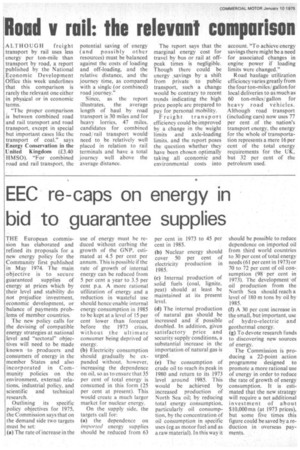Road v rail: the relevant comparison
Page 22

If you've noticed an error in this article please click here to report it so we can fix it.
ALTHOUGH freight transport by rail uses less energy per ton-mile than transport by road, a report 'published by the National Economic Development Office this week underlines that this comparison is rarely the relevant one either in physical or in economic • terms.
. "The proper comparison is between combined road and rail transport and road transport, except in special but important cases like the transport of coal." says Energy Conservation in the United Kingdom (1.3.40 HMSO). "For combined road and rail transport, the potential saving of energy (and possibly other resources) must be balanced against the costs of loading and off-loading, and the relative distance, and the journey time, as compared with a single (or combined) road journey."
Since, as the report illustrates, the average length of haul by road transport is 30 miles and for heavy lorries, 47 miles, candidates for combined road/ rail transport would need to be relatively well placed in relation to rail terminals and have a total journey well above the average distance. The report says that the marginal energy cost for travel by bus or rail at offpeak times is negligible. Though there could be energy \savings by a shift from private to public transport, such a change would be contrary to recent trends . indicating the high price people are prepared to pay for personal mobility.
Freight transport efficiency could be improved by a change in the weight limits and axle-loading limits, and the report poses the question whether they have been chosen optimally taking all economic and environmental costs into account. To achieve energy savings there might be a need for associated changes in engine power if loading limits were changed."
Road haulage utilizatiOn efficiency varies greatly from the four ton-miles/gallon for local deliveries to as much as 60 ton-miles/gallon for heavy road vehicles. Although road transport (including cars) now uses 77 per cent of the nation's transport energy, the energy for the whole of transportation represents a mere 16 per cent of the total energy requirements for the UK, but 32 per cent of the petroleum used.




































































































